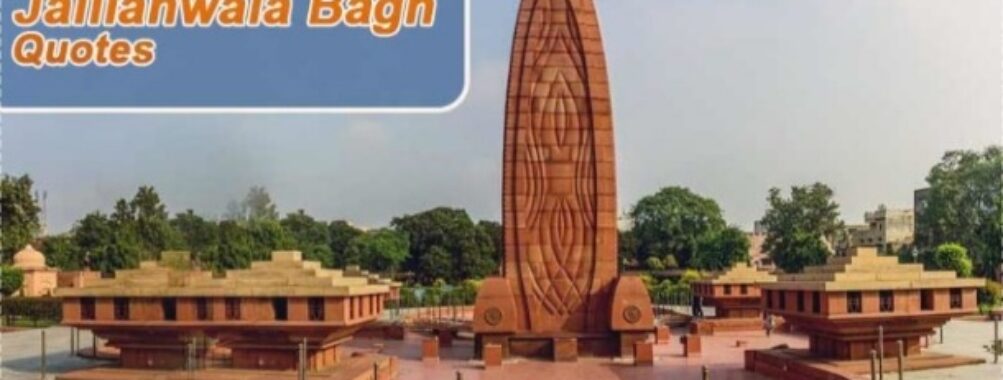
Jallianwala Bagh
Table of Contents Jallianwala Bagh is one of those places that quietly grips your heart long before you realize it. Standing inside its walls, there’s an almost eerie stillness, a silence that speaks louder than words. This public garden, now a memorial park, marks one of the most tragic yet defining moments in India’s struggle for independence — the massacre of April 13, 1919. The eternal flame that burns here isn’t just symbolic; it feels like a whisper from the past, reminding every visitor of the cost of freedom. I remember the first time I walked through the narrow entrance — it’s almost claustrophobic, a reminder of how trapped those innocent people must have felt. And yet, there’s beauty here too. The lush greenery and the calm atmosphere somehow coexist with the weight of history, making it a place that’s both heartbreaking and deeply peaceful at the same time. For travelers, Jallianwala Bagh isn’t just another tourist stop; it’s a place to pause, reflect, and maybe even feel a little humbled. The bullet marks still visible on the walls, the Martyrs’ Well where hundreds jumped to escape the gunfire — these aren’t just exhibits, they’re raw pieces of history frozen in time. You can almost imagine the chaos, the panic, the courage. And as you walk past families picnicking or children playing on the lawns, it’s hard not to think about how life, somehow, always finds a way to move forward. What’s fascinating is how Jallianwala Bagh manages to balance remembrance and recreation. You’ll see locals sitting under trees, chatting softly, and tourists taking photos near the flame. It’s not disrespectful — it’s almost as if the park has become a living tribute, a space where history and present-day life coexist. I once met an elderly man there who said he visits every year on the same date, just to light a candle. He told me, “It’s not about mourning anymore; it’s about remembering.” That stuck with me. If you’re planning a trip, the best time to visit Jallianwala Bagh is from October to March. The weather in Amritsar during these months is pleasantly cool, making it ideal for walking around and soaking in the atmosphere without sweating through your clothes. I made the mistake of visiting once in late May — the sun was relentless, and while the garden offered some shade, it was tough to stay long. Early mornings or late afternoons are perfect for photography too; the light hits the memorial just right, casting long shadows that add a dramatic tone to your pictures. And if you happen to be in Amritsar around mid-April, you might catch the annual remembrance ceremonies. It’s a powerful experience — locals gather to pay respects, and the air feels heavy with emotion. Even if you’re not one for crowds, witnessing that collective moment of remembrance is something special. Getting to Jallianwala Bagh is pretty straightforward. It’s located right in the heart of Amritsar, just a short walk from the Golden Temple — you can actually visit both in one go. Most travelers prefer to stay near the temple area, which makes it easy to explore the city’s top attractions on foot. Rickshaws and taxis are readily available, and honestly, taking a rickshaw ride through the bustling streets adds its own charm to the experience. If you’re coming from the Amritsar railway station, it’s only a quick 10–15 minute drive depending on traffic. For those flying in, the nearest airport is Sri Guru Ram Dass Jee International Airport, which is about 12 kilometers away. From there, you can hop into a cab or use ride-sharing apps — they’re quite reliable and affordable here. And if you’re the adventurous type like me, you might even enjoy walking through the local markets on your way — the smells of street food, the chatter of vendors, and the energy of the place are unforgettable. Visiting Jallianwala Bagh isn’t just about sightseeing; it’s about connecting with history on a personal level. Here are a few tips I’ve picked up over the years — some practical, others just from experience. One thing I always tell fellow travelers — don’t rush through it. Jallianwala Bagh isn’t a place you “see”; it’s a place you feel. Take your time, sit on one of the benches, watch the flame flicker, and think about what this place means. It’s not just part of Indian history; it’s part of the world’s story about humanity, courage, and resilience. And when you finally step out through that narrow gate, you’ll probably feel a mix of sadness and gratitude — sadness for what happened, and gratitude for the freedom that came after. So yes, visit Jallianwala Bagh. Not just to tick it off your travel list, but to remind yourself that history isn’t just dates and monuments — it’s real people, real emotions, and real stories that continue to echo through time. And if you’re anything like me, you’ll leave with a lump in your throat and a newfound respect for those who stood their ground, even in the face of unimaginable horror.Description
Key Features
Best Time to Visit
How to Get There
Tips for Visiting
Location
Places to Stay Near Jallianwala Bagh
Find and Book a Tour
Explore More Travel Guides
No reviews found! Be the first to review!